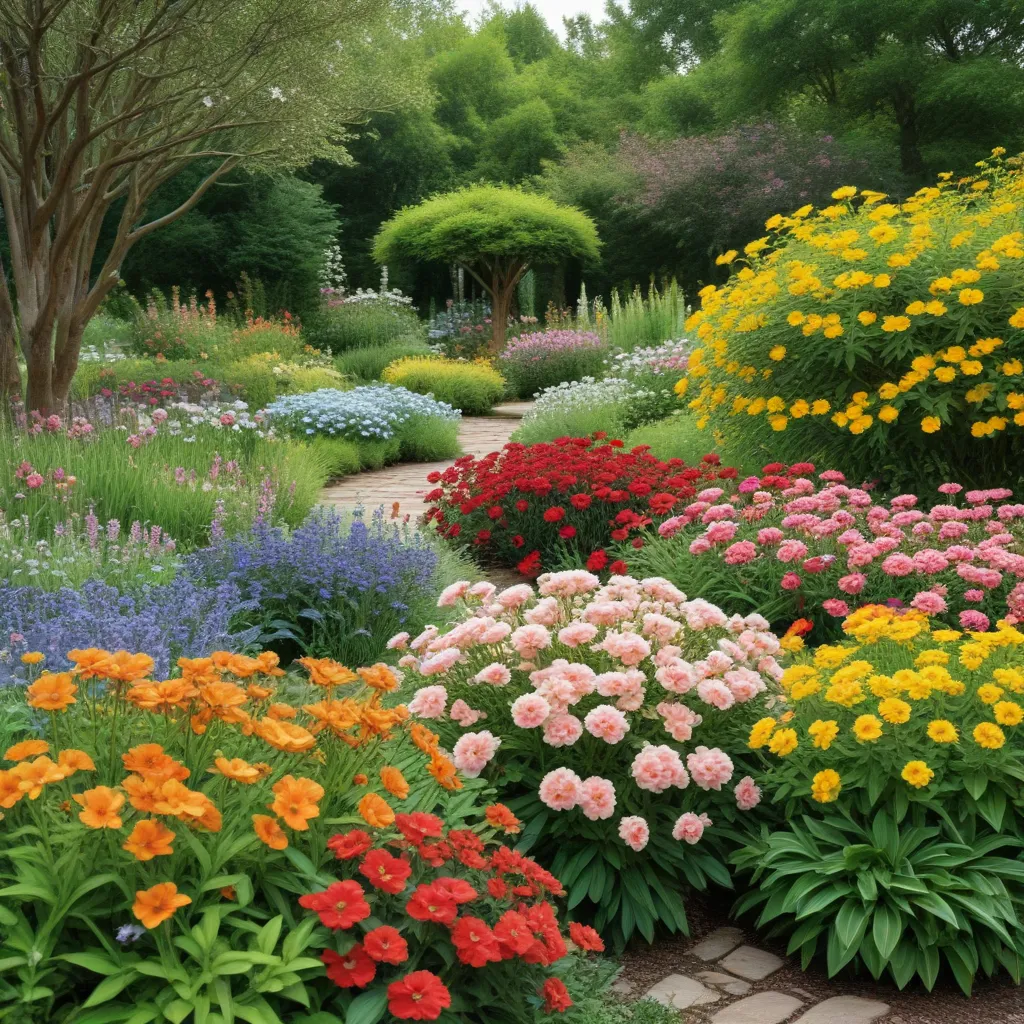
Gardens are ever-evolving landscapes that captivate the senses and nourish the soul. As the caretakers of these vibrant oases, we have the privilege and responsibility to cultivate spaces that not only delight the eye but also support the delicate web of life. At the Wine Garden Inn, we believe that a thriving garden is a harmonious blend of visual appeal and ecological stewardship.
Seasonal Gardening Strategies
Spring Preparation
As the dormant winter slumbers give way to the first whispers of spring, our gardens beckon us to action. This is the time to lay the groundwork for a bountiful and beautiful growing season. Begin by assessing the soil, replenishing nutrients, and incorporating compost to ensure a rich foundation for your plants. Carefully prune any winter-worn perennials, remove debris, and add a light layer of mulch to conserve moisture and suppress weeds.
Summer Maintenance
Once the garden bursts into life, regular maintenance becomes essential. Diligent watering, especially during hot, dry spells, helps to keep your plants thriving. Deadhead spent blooms to encourage continuous flowering, and be vigilant in monitoring for pests or diseases. Integrating native plants into your design not only adds visual interest but also supports local pollinators and wildlife, reducing the need for chemical interventions.
Autumn Rejuvenation
As summer’s heat fades and the air turns crisp, it’s time to prepare your garden for the winter ahead. Tidy up spent foliage, divide overcrowded perennials, and plant bulbs that will burst forth with springtime splendor. Consider sowing cover crops to enrich the soil and suppress weeds over the dormant season. Thoughtful autumn tasks lay the groundwork for a vibrant resurgence in the coming year.
Winter Rest
While the garden may appear dormant, it is simply resting and recharging for the next cycle of growth. This is an opportune time to reflect on the past year’s successes and challenges, and to plan for future improvements. Experiment with new plant varieties, contemplate design changes, and browse seed catalogs to cultivate your vision for the seasons ahead.
Visually Appealing Garden Design
Color Harmony
Crafting a visually stunning garden begins with a thoughtful approach to color. Experiment with complementary hues, such as the vibrant oranges and deep purples of Mexican sunflowers and purple coneflowers, or create a soothing palette of soft pastels and neutral tones. Carefully consider the bloom times of your plants to ensure a continuous display of color throughout the growing season.
Textural Contrast
Incorporate a variety of textures to add depth and interest to your garden. Pair the delicate, lacy foliage of fennel with the broad, sturdy leaves of hostas. Juxtapose the billowing, airy plumes of miscanthus grasses against the upright, architectural forms of agave. These textural contrasts create a visually captivating tapestry that engages the senses.
Layered Plantings
Arrange your garden in a series of thoughtful layers, from the trailing groundcovers to the towering canopy. This creates a sense of depth and movement, while also providing essential habitat for a diverse array of flora and fauna. Consider the mature size of each plant and strategically position them to ensure that no layer overwhelms the other, resulting in a harmonious and visually compelling design.
Ecological Considerations
Native Plant Selection
When it comes to cultivating an ecologically diverse garden, the foundation lies in the native plants you choose. These resilient species have evolved alongside the local wildlife, providing essential food and shelter. Incorporate a diverse mix of native wildflowers, grasses, shrubs, and trees to support a thriving ecosystem of pollinators, birds, and other beneficial creatures.
Pollinator-Friendly Choices
Pollinators, such as bees, butterflies, and hummingbirds, are the unsung heroes of the garden. By selecting pollinator-friendly plants that offer nectar and pollen throughout the growing season, you can create a haven for these vital creatures. Opt for species with a range of bloom times, from early-spring crocus to late-summer Joe Pye weed, to ensure a continuous food source.
Sustainable Practices
Embrace sustainable gardening practices to minimize your environmental impact and foster a healthy, resilient ecosystem. Utilize organic fertilizers and eschew harsh chemicals, which can disrupt the delicate balance of soil microorganisms and harm beneficial insects. Implement water-saving techniques, such as rain gardens and xeriscape plantings, to conserve this precious resource.
Seasonal Bloom Cycles
Early Bloomers
As the first whispers of spring awaken the garden, delight in the cheerful blooms of daffodils, tulips, and hellebores. These early risers not only signal the return of warmer days but also provide a vital food source for emerging pollinators. Carefully plan your garden to ensure a sequence of early-season bloomers, creating a captivating floral display that heralds the arrival of spring.
Midsummer Showstoppers
During the height of summer, the garden explodes with a vibrant tapestry of color and texture. Revel in the bold hues of zinnias, the delicate wands of lavender, and the architectural silhouettes of sunflowers. These midsummer showstoppers not only delight the eye but also attract a diverse array of pollinators, contributing to the overall health and vitality of your garden ecosystem.
Late-Season Stunners
As autumn approaches, the garden shifts gears, showcasing a new cast of captivating performers. Marvel at the fiery foliage of red maples, the cheerful blooms of asters, and the commanding presence of purple coneflowers. These late-season stunners not only prolong the visual interest of your garden but also provide valuable food and shelter for migratory birds and overwintering insects.
By embracing the cyclical nature of the garden and carefully curating your plant selection, you can create a visually stunning and ecologically diverse oasis that delights the senses and nourishes the soul. Visit the Wine Garden Inn to learn more about our commitment to sustainable gardening and the integration of seasonal produce into our gourmet culinary offerings.
